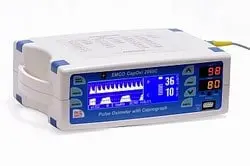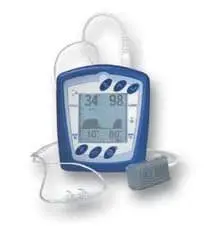What is Capnography?

With the 2010 guidelines, American Heart Association now endorses wave form capnography.
So what is Capnography?
Capnography is becoming an integral part of the monitoring done in the prehospital environment. A capnograph is used to monitor/measure the amount of carbon dioxide in respiratory gases. It provides information about the effectiveness of respiration’s, and end-tidal carbon dioxide values. The amount of expired carbon dioxide reflects the changes in metabolism, circulation respiration, the airway and breathing system and, therefore, has become a vital tool for predicting the return of spontaneous circulation (ROSC) following a cardiac arrest.
To understand how this works it is best to first go back to the “basics”
Physiologically: Carbon dioxide is produced in the tissues by metabolism and is then diffused into the blood via the venous system (this is basically equal to cardiac output) The blood carrying carbon dioxide enters the right side of the heart and from there travels to the lungs. This is where oxygen enters the blood. Carbon dioxide is given out or eliminated during expiration. The measurement of carbon dioxide that is found in the expired air indicates the amount of carbon dioxide that has been produced at the tissue level and in the delivery of it to the lungs via the circulatory system.

Capnography directly monitors the inhaled and exhaled concentration of carbon dioxide. It does this by monitoring the concentration or partial pressure of carbon dioxide.
Predicting the ROSC during CPR can be very difficult. Survival is dependent upon many things, such as, the factors surrounding the arrest, pre-existing medical limits to the resuscitation efforts, time of onset of cardiac arrest, etc. The constant assessment of etCO2 during CPR gives a good indication of the patient with ROSC and a patient without ROSC. If the air exchange shows enough carbon dioxide, it is a great indicator to continue with artificial respiration and CPR.
A 54yr old man from Minnesota will tell you how important capnography is. After collapsing from a sudden cardiac arrest, emergency responders began doing CPR. With the information received by capnography it was determined that his brain was being protected with adequate blood flow. For 96 minutes, responders continued their efforts and the patient survived with NO injury to his brain.
Capnographs were once only found in the operating rooms but are slowly being made available to emergency personnel.



